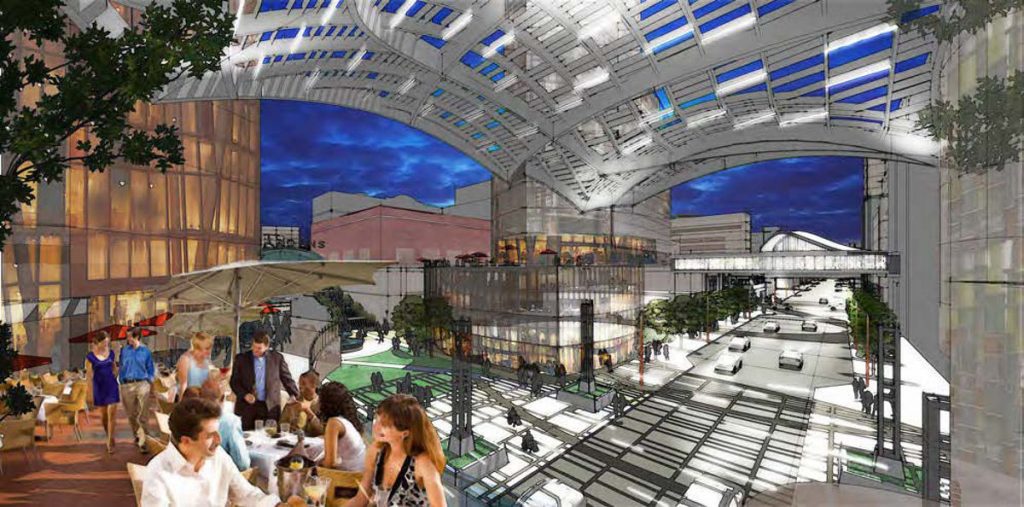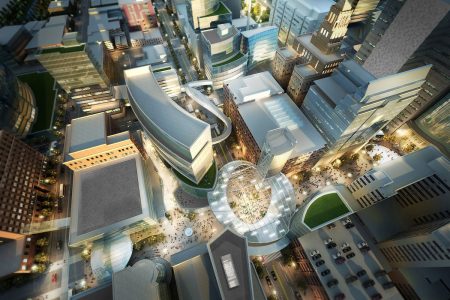Research update reveals design conundrum
by Andrew Setterholm, Post-Bulletin
Originally published December 7, 2016

In leading a public space design project for Destination Medical Center’s Heart of the City district, RSP Architects and RSP Principal Jon Buggy have promised solutions that are “authentic” to Rochester.
As the consultant team has found out in the research and interview stage of its design process, “authentic” might mean a few different things to Rochester’s mix of residents, employees and the millions of people who visit the city each year.
Teri Kwant, who leads RSP DreamBox, a subsidiary of RSP, set out to explore that question, to find out what different groups in Rochester wanted and needed, and how they might interact with public space in the Heart of the City district.
The answer Kwant and the consultant team has found is perhaps a surprising one not revealed by previous market research in the community:
“We consistently heard across a lot of our interviews that if we meet the needs of the Mayo patients, we’ll be able to meet the needs of the community. And actually we’re finding that’s not necessarily true,” Kwant said.
Kwant and the consultant team presented findings of the early stages of its work at a Tuesday meeting of the Heart of the City Community Advisory Committee.
The research team conducted “pop-up” interviews on the streets of Rochester, at family-oriented events, in public spaces and in local businesses, with the objective of conducting qualitative — not quantitative — research, Kwant said. The difference in the consultant team’s method allowed it to dig deeper into each interview, to the emotional level.
A preliminary finding of the interviews was that Rochester visitors and Mayo Clinic patients wanted different ways to experience the community than residents did.
Patients in particular wanted quiet space, natural areas, places for conversations and, overall, a distraction from the reason for their visit to Rochester, Kwant said.
Residents were more interested in the idea of engagement, of spaces and places that allowed access, participation and a sense of belonging.
The unique emotional responses to the interviews were what led the consultant team to refute the common idea that designing public space in Rochester specifically for patients might satisfy all user groups in the city.
“And I think that’s kind of an emerging idea,” Kwant said. “I don’t want to put my stake in the ground and say this is where we’re going with this, but when I come back to you with a final presentation, we’ll see if this sticks.”
The consultant team’s findings were in sharp contrast to the comments made by one member of the Heart of the City Public Advisory Committee at the group’s last meeting in October. Committee member Javon Bea, who heads the Kahler Hospitality Group, said his predominant bias and input in the committee would be to see the Heart of the City district serve Mayo Clinic patients and Rochester visitors above all others.
Bea did not attend Tuesday’s meeting.
Other committee members were pleased with the direction DreamBox and the consultant team had taken. Committee member Nick Campion, also a Rochester City Council member, said he had been concerned the consultant might repeat or relay some of the same information from previous studies of the same groups in Rochester.
“One thing that I’m really happy to see is this kind of questioning of the base assumptions that underline this,” Campion said. “I’m really happy to hear that questioning and willingness to come back and tell us these assumptions you thought are not where we’re going, that’s not what these experiential kind of interviews are telling us. That’s really important.”
The consultant team has completed about 80 percent of its public awareness and information gathering work. The findings of that phase will play a large role in steering the design work that will follow.
Buggy said the team is committed to doing all of its work — from discovery to ideation and creation — with a focus on Rochester’s unique identity.
“There’s a charge I think that we all own here, which is to make sure the work that we’re doing and how we’re doing the work is really authentic for Rochester and right for Rochester — and right for the Heart of the City,” Buggy said.

